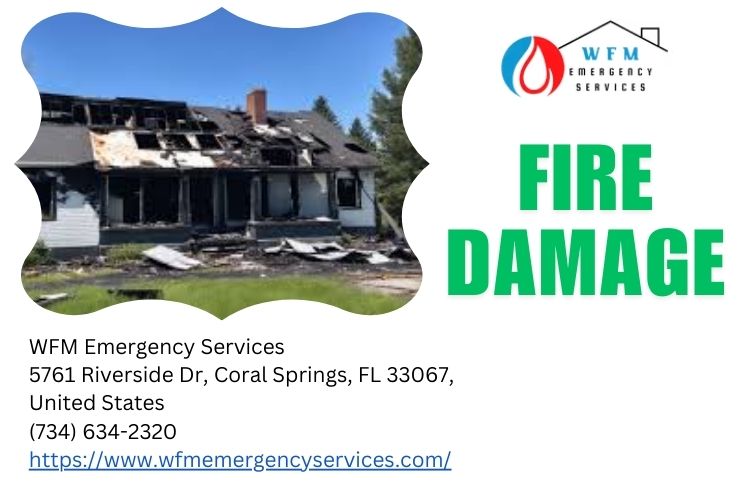Introduction
Water damage can wreak havoc on your home, leading not just to structural issues but also to health hazards like mold growth. For homeowners in Coral Springs, understanding how to spot and handle mold after water damage is crucial. This article will guide you through the entire process—from recognizing the signs of mold growth to implementing effective mold remediation techniques. With a focus on practical advice and detailed strategies, this comprehensive guide aims to empower you as a homeowner.
Coral Springs Homeowners: How to Spot and Handle Mold After Water Damage
When faced with water intrusion, whether from a burst pipe or a heavy storm, the potential for mold growth becomes a pressing concern. Mold thrives in damp environments, so it’s essential for Coral Springs homeowners to act swiftly.
Understanding Water Damage and Its Causes
What is Water Damage?
Water damage refers to any destruction caused by excess water. This can stem from various sources:
- Burst pipes Flooding Roof leaks Appliance malfunctions (e.g., washing machines, dishwashers)
Common Signs of Water Damage
Identifying signs of water damage early can prevent extensive mold growth. Look out for:

- Stains on walls or ceilings Peeling paint or wallpaper Musty odors Warped flooring or walls
Mold Growth: The Hidden Threat
Why Does Mold Grow?
Mold spores are present almost everywhere in our environment; they become problematic when they land on damp surfaces. Here’s why rapid action is crucial:
- Moisture: The primary trigger for mold growth. Temperature: Mold thrives in warm environments. Food Source: Organic materials like wood and drywall provide sustenance.
How to Identify Mold After Water Damage
Visual Indicators of Mold
One of the most straightforward ways to identify mold is through visual inspection. Look for:
- Black spots or patches on walls Discoloration on ceilings Fuzzy growths on various surfaces
Smell Test: A Key Indicator
A musty smell often indicates hidden mold. If you notice this scent, it may be time for further investigation.
Health Risks Associated with Mold Exposure
Common Health Issues Linked to Mold
Exposure to mold can lead to various health problems, particularly for sensitive individuals:
- Allergic reactions (sneezing, skin rash) Respiratory issues (asthma attacks) Fatigue and headaches
Steps for Coral Springs Homeowners: Handling Water Damage and Mold
Step 1: Assess the Situation Immediately
Time is of the essence when dealing with water damage. Perform an initial assessment:
Identify the source of water intrusion. Document any visible damage (photos are helpful). Decide if you need professional assistance.Step 2: Address Moisture Sources
If possible, fix any leaks that are causing water accumulation. This could involve:
- Repairing broken pipes Replacing damaged roofing shingles Ensuring proper drainage around your foundation
Step 3: Remove Affected Materials
For effective water damage restoration, remove materials compromised by moisture:
- Carpeting and padding Drywall sections that have been soaked Insulation that cannot dry out effectively
DIY vs Professional Help: When to Call Experts
Knowing when to go DIY versus hiring professionals can save time and money—and sometimes even lives.
When You Can Handle It Yourself
Minor cases where you might opt for DIY include small leaks or moisture issues affecting non-critical areas.
When It's Time for Professionals
However, if you experience significant water intrusion or extensive mold growth (larger than 10 square feet), it's best to call in professionals specialized in mold remediation.
Mold Remediation Process Explained
Understanding the steps involved in mold remediation can help you feel more prepared.
Step 1: Containing the Area
Professionals will seal off affected areas using plastic sheeting to prevent spores from spreading during cleanup.
Step 2: Removing Contaminated Materials
All contaminated materials will be safely removed from your home following strict guidelines.
Step 3: Cleaning Surfaces
Hard surfaces will be scrubbed down using specialized cleaning agents designed for mold removal.
Step 4: Drying Out the Space
Dehumidifiers and fans will be employed extensively to ensure all moisture is eliminated.
Prevention Strategies for Coral Springs Homeowners
Once you've dealt with immediate concerns regarding mold after water damage, it’s vital to implement preventative measures:
Regular Inspections
Conduct routine checks around your home—especially areas prone to humidity like bathrooms and crawl spaces.

Maintaining Proper Ventilation
Ensure your home has adequate ventilation systems in place—install exhaust fans in moisture-prone areas.
FAQs About Mold After Water Damage
Q1: How soon should I check my home after experiencing water damage?
A: Ideally, check within 24 hours after the incident occurs. The sooner you act, the less likely you'll encounter severe mold problems.
Q2: Can I get rid of black mold myself?
A: Small patches may be treatable with household cleaners; however, large infestations require professional intervention due to health risks involved.
Q3: What should I do if I see mold?
A: Avoid disturbing it; contact professionals who specialize in mold remediation immediately.
Q4: Will insurance cover mold removal?
A: Coverage varies by policy; review your specific homeowner's insurance policy regarding natural disasters or flooding incidents.
Q5: Is all black mold toxic?
A: Not all black molds are toxic; however, some species can cause serious health issues—consult a professional if concerned about identification or safety measures needed.
Q6: How long does it take for molds to grow after water exposure? A: Molds can begin developing within 24–48 hours under suitable conditions (warmth & moisture).
Conclusion
In conclusion, Coral Springs homeowners face unique challenges when managing water damage and subsequent mold growth. Being well-informed about identification methods and remediation processes empowers homeowners like yourself against water damage restoration- WFM Emergency Services unseen threats lurking after unfortunate incidents occur at home. By taking proactive steps now—whether through regular inspections or calling professionals—you'll create a healthier living environment while protecting your investment over time!
Contact Us
WFM Emergency Services
Address: 5761 Riverside Dr, Coral Springs, FL 33067, United States
Phone number: (734) 634-2320
Website: wfmemergencyservices.com